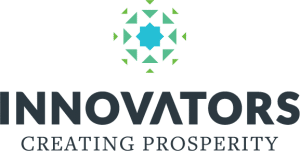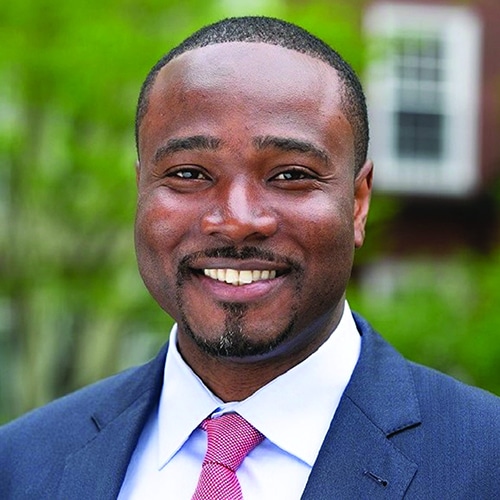Welcome to our Innovators Creating Prosperity series, spotlighting organizations across the globe that are positively impacting economic development.

The development industry is brimming with programs that seek to bring water to poor communities, and for good reason. Globally, 2.1 billion people lack safe drinking water at home, and more than 350,000 preventable child deaths occur every year.
Most programs raise funds, build wells in poor communities, and hope for the best. The organization I co-founded, Poverty Stops Here, followed this pattern and built several wells in Nigeria. However, after a few years, only one of the five wells built was functioning. Most water well projects don’t last because there isn’t a mechanism to sustain them. That’s where Safe Water Network comes into the picture.
Founded in 2006, Safe Water Network is committed to solving the access to safe water problem in poor communities, sustainably. As opposed to simply building a well or providing water, the organization identifies entrepreneurs in its partner communities, provides them with the necessary equipment for pumping and purifying water, and trains them on how to sell their services. In essence, Safe Water Network goes into a community and builds capacity so that its water investments last and don’t create dependency. Although this model takes longer to execute than building a well, it has proven to be more profitable and sustainable.
Safe Water Network has implemented its solution in hundreds of communities and provided water to more than 1.5 million people. What’s the secret to its success? We spoke with Amanda Gimble to learn more about the promising organization.
1. Where did you get your idea? How did you know there was opportunity?
Since our inception, our focus has been on ensuring communities in low- and middle-income countries have access to a reliable, affordable supply of safe water. Though our original focus was on water technology, we shifted toward overcoming challenges to sustainability with a consumer proposition that prioritizes quality and reliability. By applying demonstrated market approaches, business processes, and financial controls, we are addressing high failure rates that result in billions of dollars wasted and, worse, the health and livelihoods of billions of people needlessly compromised.
Theory Insight: Often times when an organization’s business model is targeted at nonconsumption, it ends up doing more than what it intended to do at the start. Safe Water Network quickly discovered the problem was much larger than just water tech, and responded accordingly. Many other market-creating innovators we’ve studied had similar realizations.
2. What was your initial target market?
Our target market is the “missing middle”—growing towns and areas where traditional infrastructure investment falls short, or where borehole solutions are not adequate. Decentralized water solutions are particularly suited to meet the complexity around water challenges in these fragile markets, as supported by a 2017 study by Dalberg, which identified a potential market of one billion people.
Theory Insight: Nonconsumption doesn’t always refer to people living at the bottom of the economic pyramid. In this case, it simply refers to people who would benefit from having easier access to safe water but don’t, due to the cost, time, and availability.
3. What is your innovation competing with/what did your target market do/use before your innovation was available?
Sadly, in the areas we serve, our “competition” often comes in the form of natural but unsafe sources of water (rivers, lakes, etc.) or unreliable and/or overpriced sources supplied by vendors charging a premium for this essential resource.
4. Where and how did you raise funding?
Safe Water Network’s initial funding came from philanthropy, notably its Board. This provided the flexibility to test alternative approaches. Today, we have a strong track record in securing funding from a diverse donor base—private foundations, individuals, development agencies, and government.
5. Innovators often feel that the lack of an enabling environment in emerging markets—poor infrastructure, inadequate institutions, and little government support—is insurmountable. How did you overcome these challenges?
Government buy-in is critical for our model’s success. At the local level, this includes providing access to water and land, the permissions to operate, and long-term concession agreements. In Ghana and India, we’re working with government agencies and policymakers to ensure a strong enabling environment for the scale up of the approach.
A critical obstacle we encountered was an initial resistance to our market-based approach, which requires a modest payment for the water. Our relentless focus on reducing costs and improving operations—which prioritizes lower prices over maximizing profits—ultimately wins consumers over.
6. What can other innovators take away from your experience? Is there anything you’d do differently?
Among our biggest efforts are those directed at advancing a scale agenda, which requires moving well beyond our operating experience and boundaries.
Done over, we would have started designing for scale at the outset. We came to appreciate that piloting a new solution would be insufficient to catalyze scale and realize meaningful impact. Today we invest significant resources in stakeholder engagement (including government) to complement the work of others while collaborating on scaling a proposition that realizes the core principles of safety, sufficiency, accessibility, acceptability, and affordability.



